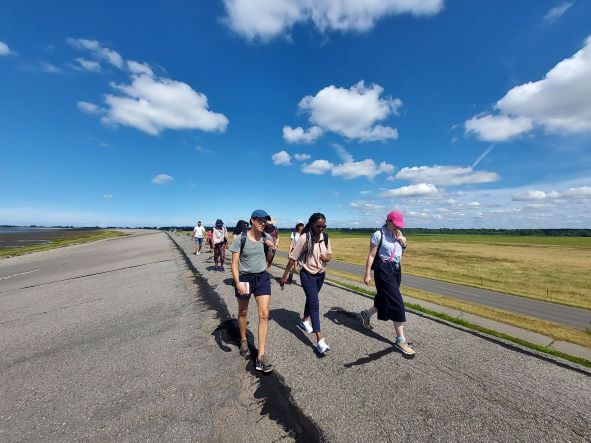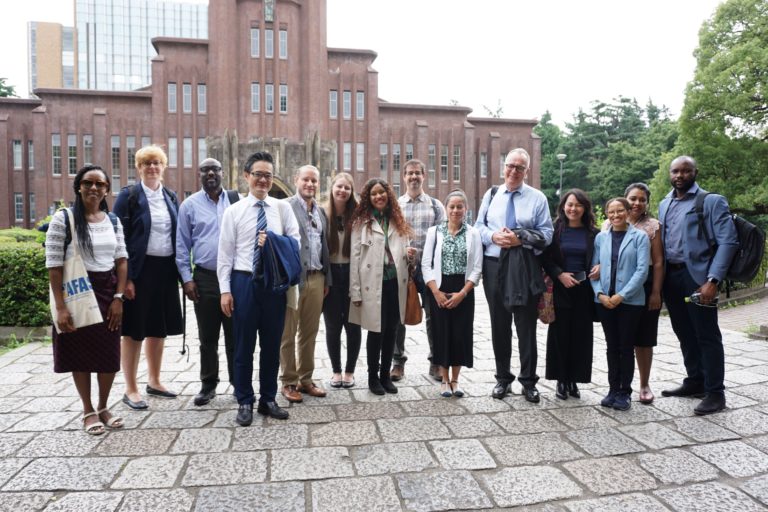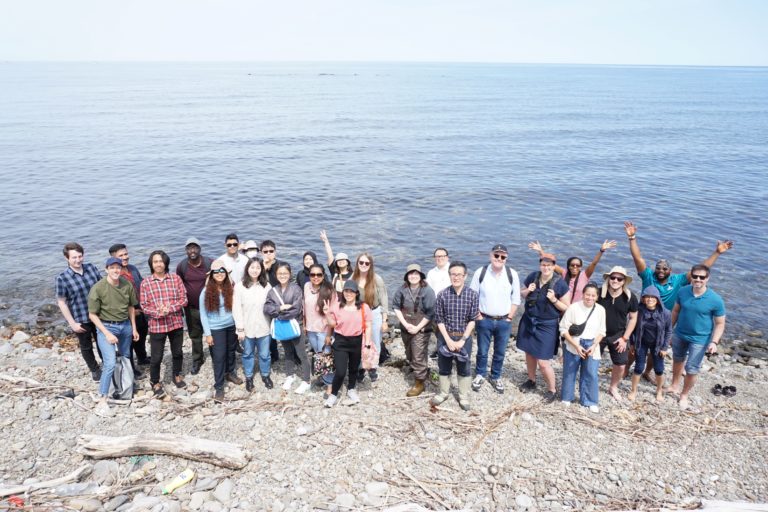Doctoral researchers look into conservation of coastal ecosystems in Germany’s north
PART 1
As part of the partnership-program between ZEF and the International Program in Agricultural Development Studies (IPADS) of the Graduate School of Agricultural and Life Sciences at the University of Tokyo, two groups of doctoral students went on simultaneous field trips to look into the “Conservation of Coastal Ecosystems – Linkages between Agriculture and Marine Environment” in August 2022. Whereas the Bonn-based ZEF-students examined conservation strategies in the Wadden Sea National Park in Schleswig-Holstein in Germany’s utmost north, the parallel excursion of Tokyo-based IPADS-students, focused on seaweed bed restoration in Hokkaido in northern Japan. ZEF-students share their experiences and insights in two blog posts.
Authors of this blog post: Subash Surendran Padmaja, Maria Eugenia Silva Carrazzone, Maria Cristhina Llerena Pinto, David Navichoc, Ahmed Abdalla
Visiting the land reclamation project Katinger Watt
Katinger Watt is a conservation reserve spanning 1,200 ha of reclaimed land located in Germany’s most northern state, Schlewig-Holstein. The region is near the UNESCO National Park “Wadden Sea”. Katinger Watt is an estuarine of the river Eider and its tributary Treene, which drains into the North Sea. The estuarine is protected and managed by the Nature and Biodiversity Conservation Union (NABU[1]), a German NGO which focuses on ecological conservation.

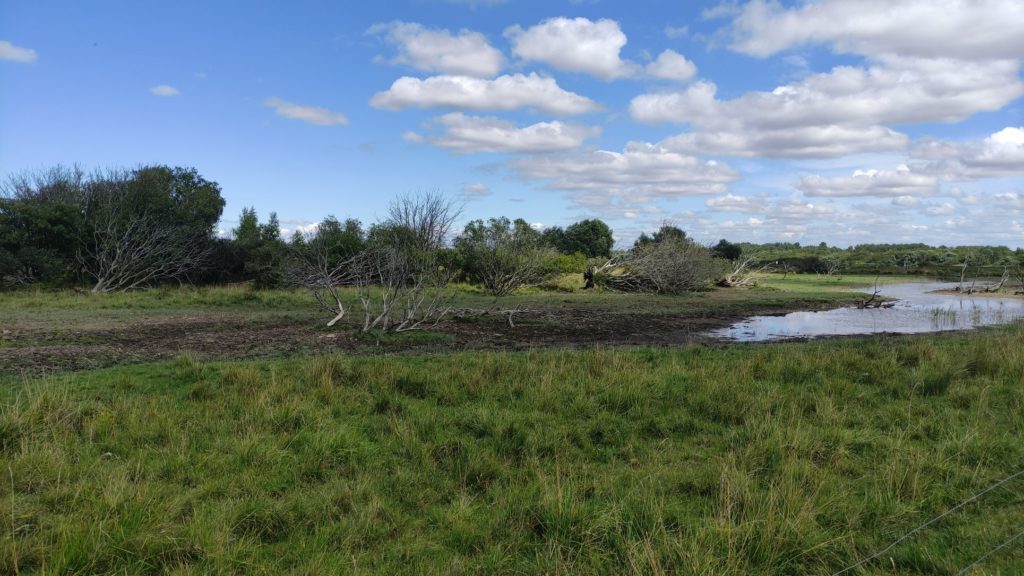
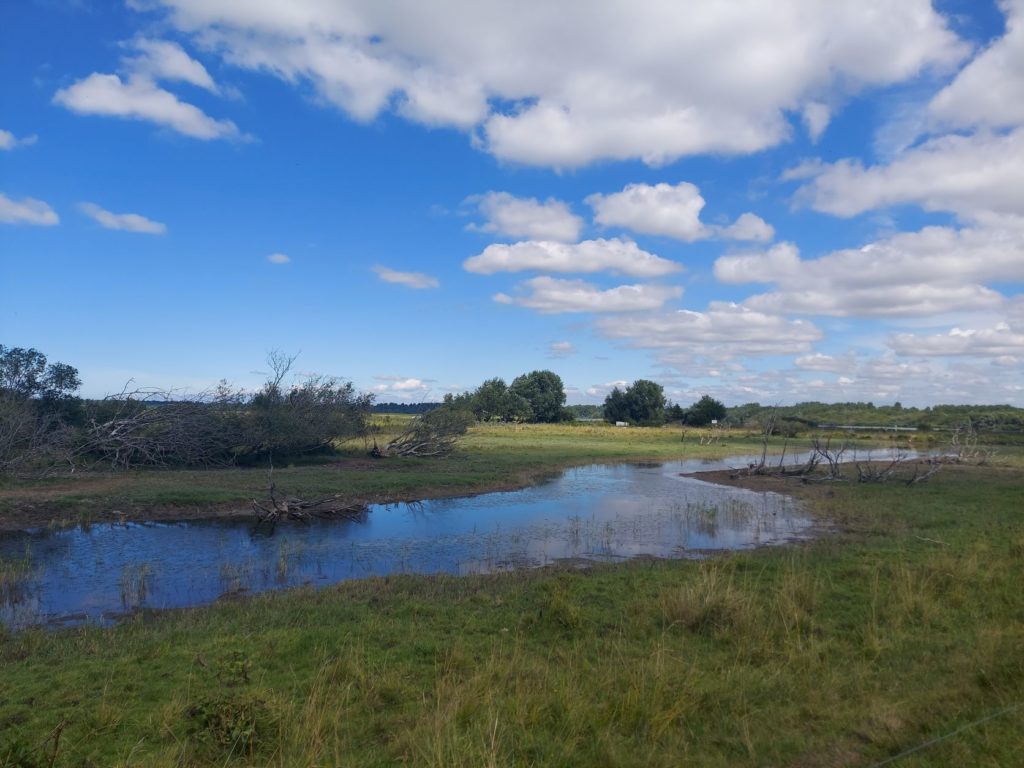

Landscape in Katinger Watt.The natural dynamic of the estuarine made the region unsuitable for humans to settle or cultivate. Yet, in the 14th century humans started constructing dykes so they could establish settlements. Since then, interactions between humans and nature – e.g. building channels to connect the Baltic and North Sea and dams to prevent floods- have led to unforeseen consequences on the environment, agricultural production and human settlements in the estuarine area. The Katinger Watt has emerged as a response to one of the many human interventions; the Eidersperrweck, which is a large sluice gate in the opening of the estuary protecting the interior region from floods. However, the Eidersperrweck modified the dynamics of the estuaries with a particular impact on the rare habitat. Thus, the former riverbed was converted into a 1,200 ha area of forest, field and marshlands; the Katinger Watt.
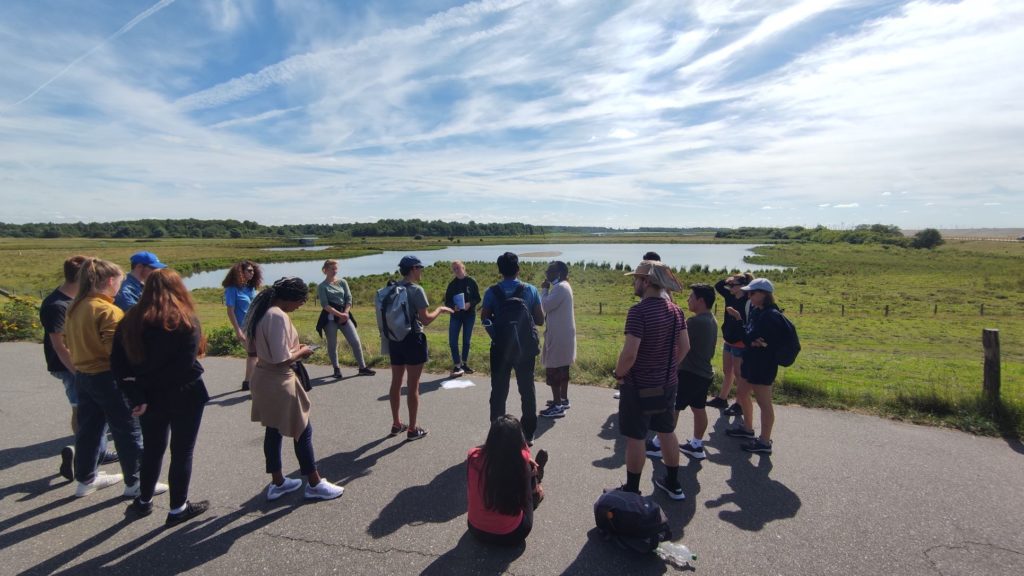
ZEF-students embarking on their field-trip.Land Reclamation Project Katinger Watt: our interaction with the initiative
In 1975, when the mud flats were transformed into land due to the construction of the Eidersperrweck, the original plan was to develop tourism in the area. To enhance the recreational value of the lands, trees were planted and a path of forest land was created. Because of the shallow earth available for rotting, the trees have shallow roots and are prone to falling. Against expectations and presumptions, the forest survived and flourished. But the project for setting up a holiday resort was not welcomed by all people in the region. Local as well as regional communities in the region opposed the plans – some because of environmental reasons, some of the nearby communities because they already had resorts, and feared competition. As a result of these protests, the plan to construct resorts was dropped and later converted into a conservation effort led by NABU (NABU 2022).
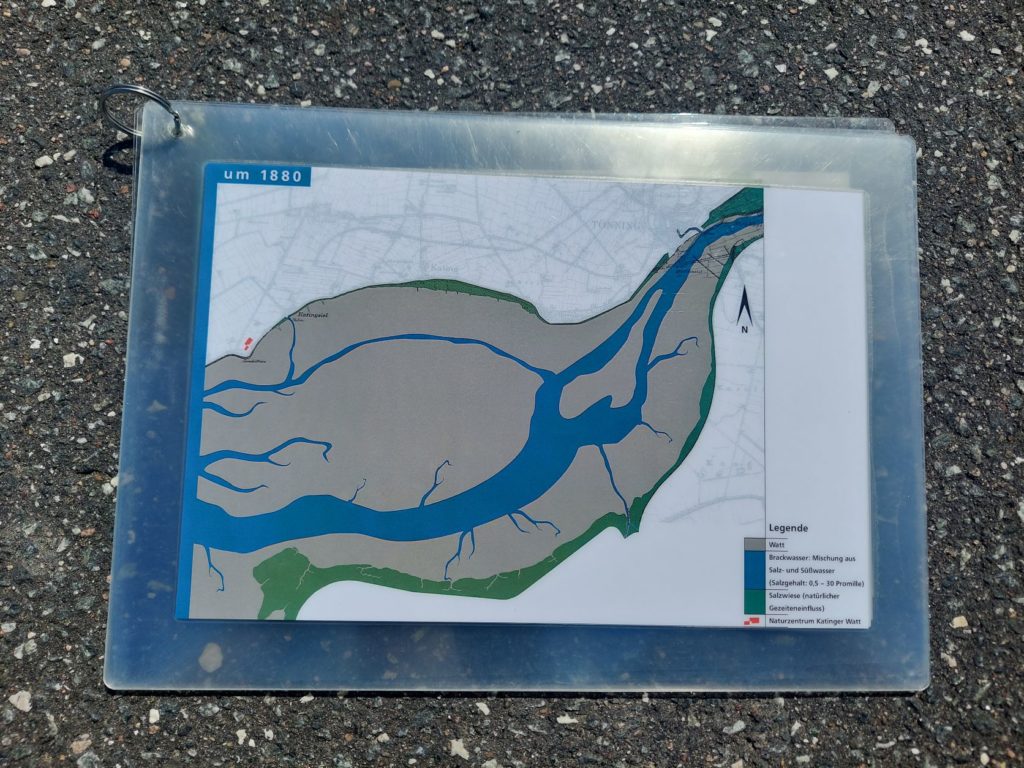
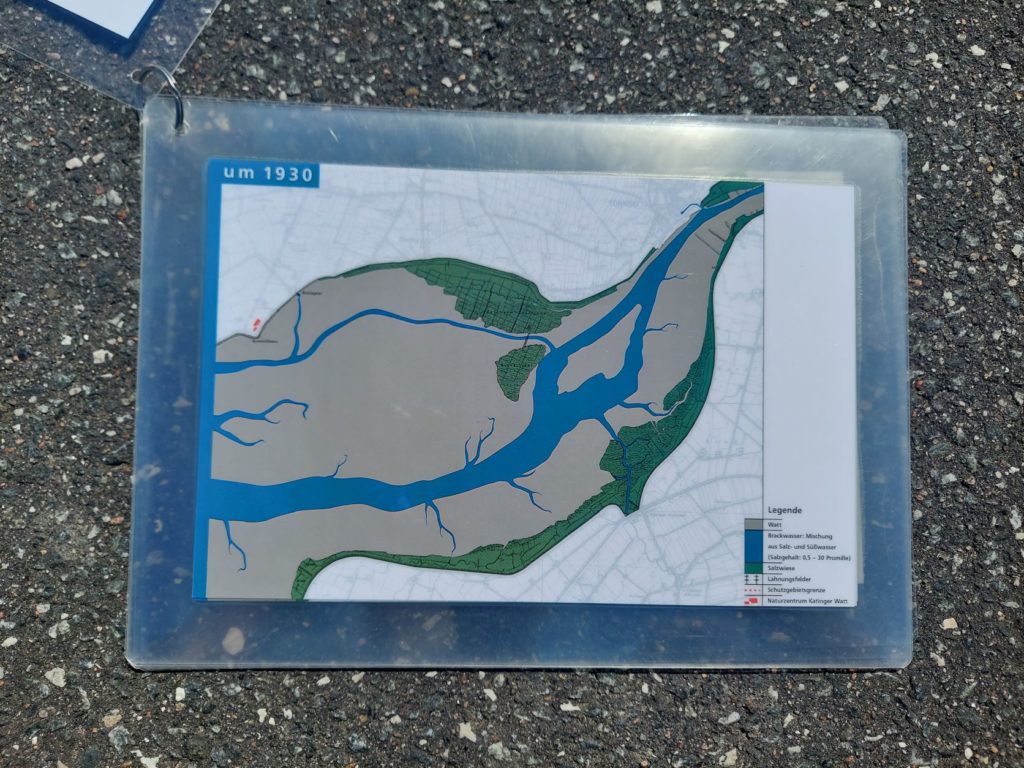


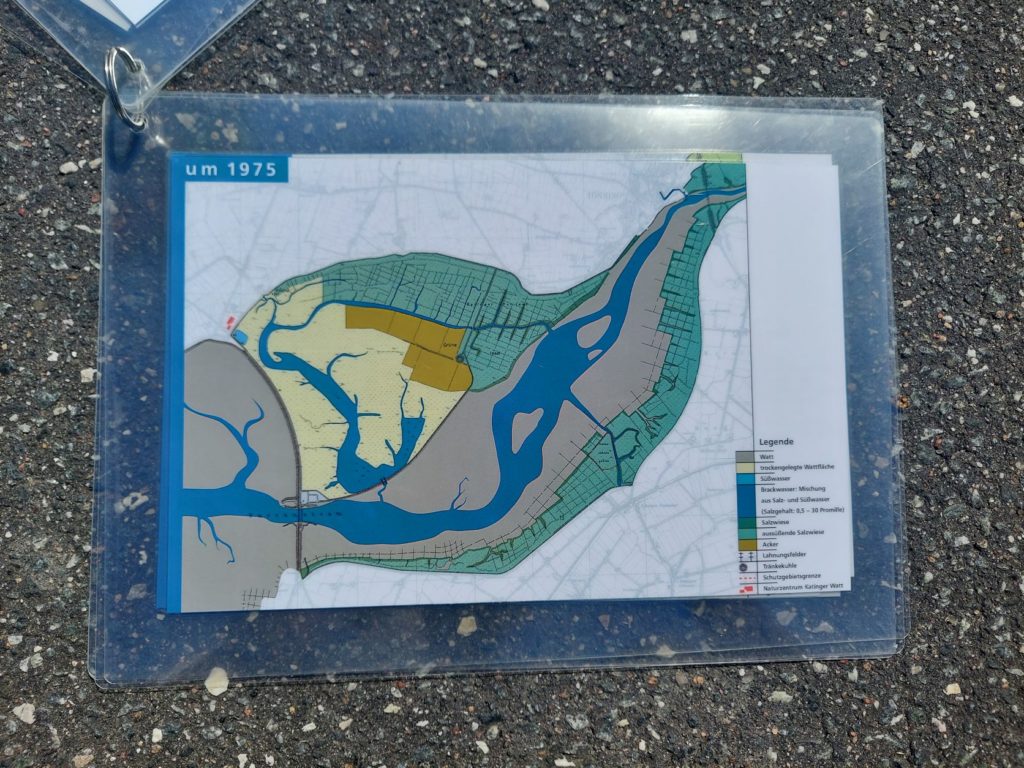
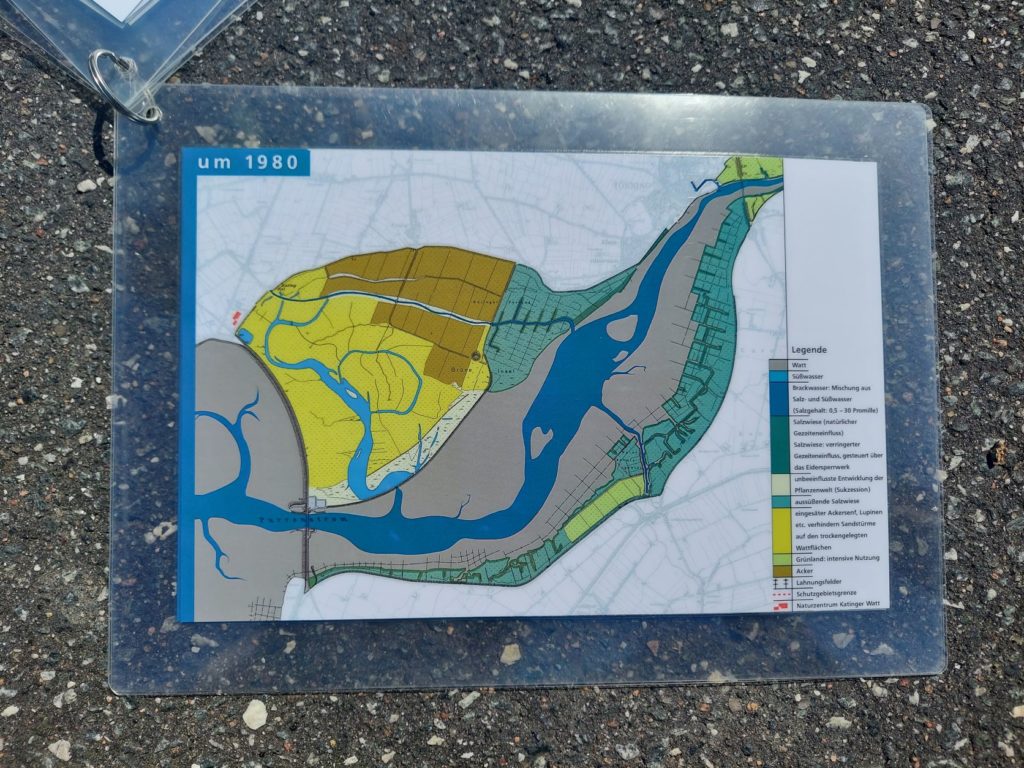
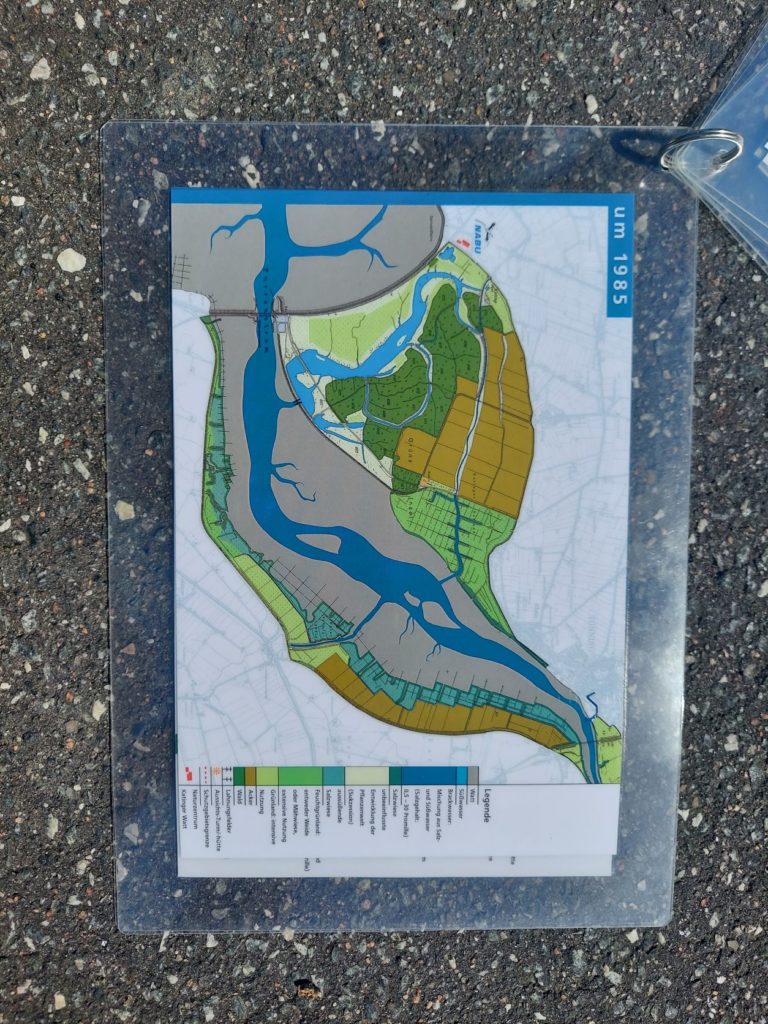

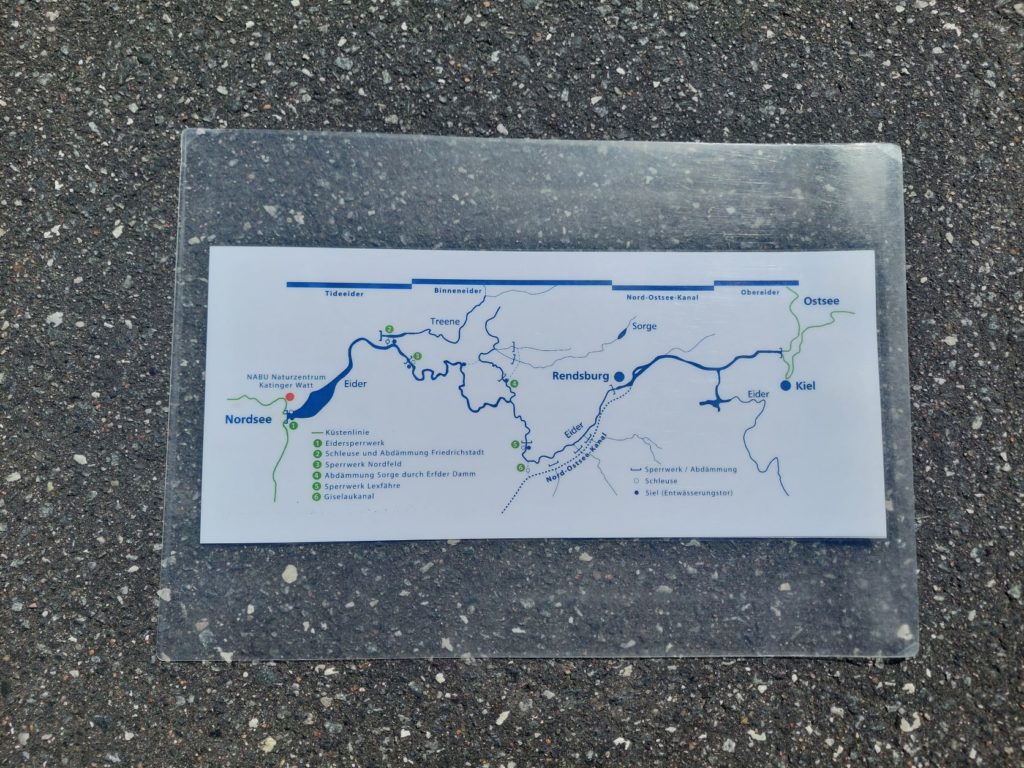

The Nature and Biodiversity Conservation Union NABU
NABU has four main goals, which are 1) Conservation of orchids endemic to the region, 2) protection of resident species birds, 3) protection of migratory birds, and 4) protection of meadows egg laying. NABU in collaboration with the local livestock farmers manages the grass by allowing cows to graze on conservation land. Grazing cows can reduce the grass which competes with orchids. Special efforts are made by NABU to protect both resident and migratory bird species like European goose, white-headed eagle, spotted red tern, artic tern, northern lapwing, meadow pippet and skylarks.
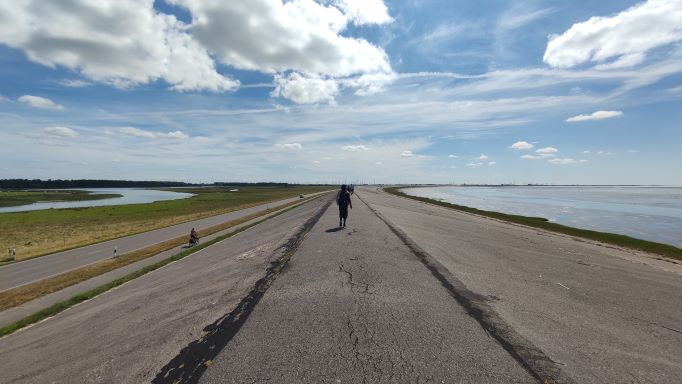
Key observations and findings from our visit
- Human intervention in nature can have irreversible effects, particularly when the impacts of those interventions -in the three dimensions of sustainability- are not evaluated ex-ante.
- Even the remediation efforts can lead to unintended effects.
- Although great efforts are undertaken in the conservation area, natural conditions will not be restored. There is no way to revert the impacts of human intervention in the ecosystem. In fact, some specific objectives had to be prioritized, leaving other relevant conservation issues aside.
- The example of NABU shows the relevance of multiple financial and political mechanisms and levels operating together. These are, e.g. commitments to biodiversity conservation made by Germany at the international (or at least European) level, the empowerment and identification with the initiative by those who voluntarily make donations and the work with the farmers in the surrounding areas.
- In this sense, some actions are highlighted: i) international commitments translate into concrete actions at the country level; ii) engage inhabitants and relevant stakeholders not only for the financing purposes, but also to cooperate in functioning together (e.g. the case of grazing cows) iii) there are different mechanisms that could be used to promote engagement, e.g. from empowering people to subsidies or compensations.
- Finally, there are concerns regarding the sustainability of such efforts. The existing model of conservation measures is donor-driven and in times of fiscal austerity or economic crisis it would be challenging to maintain such a cost-intensive conservation effort.
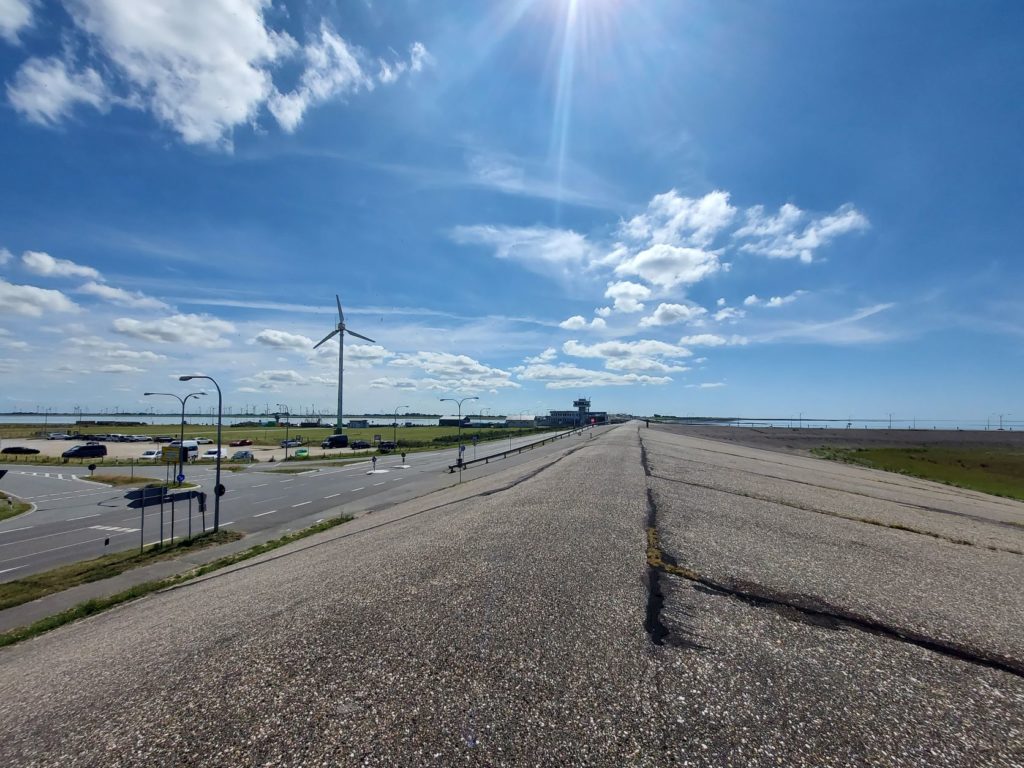
The links between the land reclamation project Katinger Watt and our ZEF-research
The visit to Katinger Watt showed us that human interventions in nature can affect several areas such as nature, ecosystems, the interaction between species, human economic activities (e.g. agriculture). The construction was carried out between 1967 and 1973 to protect the land against flooding, and as a result, the environment has changed substantially.
Studying the effects of human interventions or development-related issues generally requires a multidisciplinary approach, as we could observe here. The research carried out at ZEF has an interdisciplinary vision too, allowing us to understand in a deeper way the dynamics between different axes and therewith close the gaps between science, practice and policy.
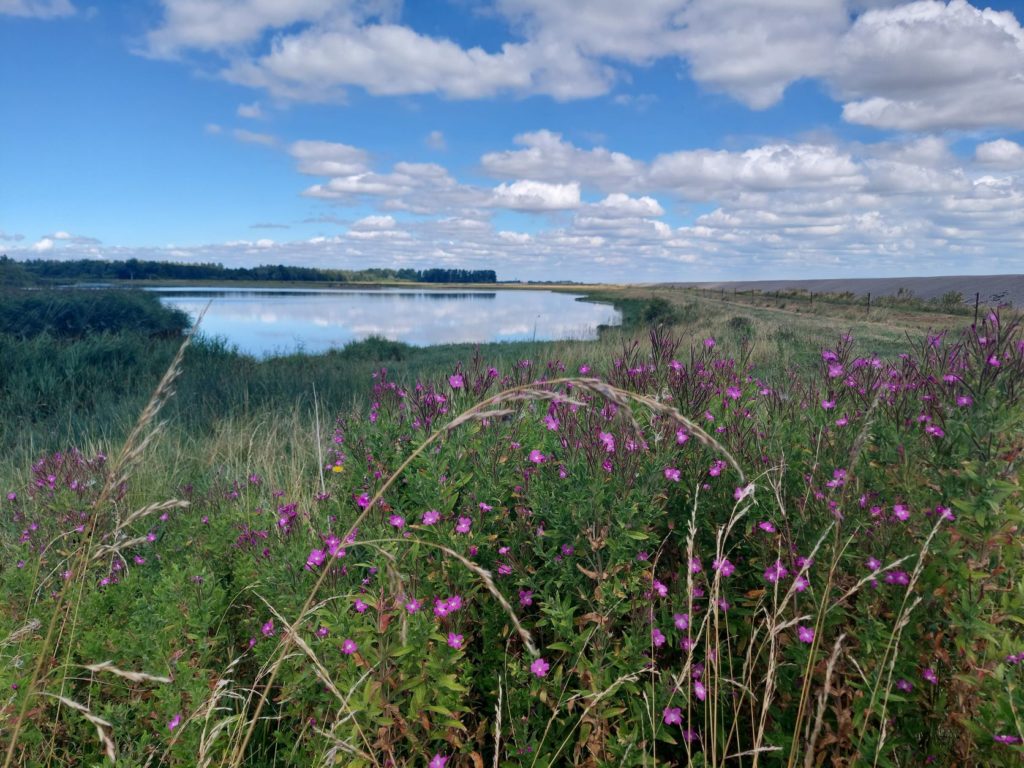
Photos: Subash Surendran Padmaja and Felipe Quartucci.
References
NABU. The Eider: the drama of the river (English version).
ZEF. About ZEF. https://www.zef.de/2129.html
[1] NABU was founded in 1899, and it is one of the oldest and largest environment associations in Germany. Its main objectives are the preservation of habitats and biodiversity, the promotion of sustainability in agriculture, forest management, water supply and distribution. (NABU n.d).
